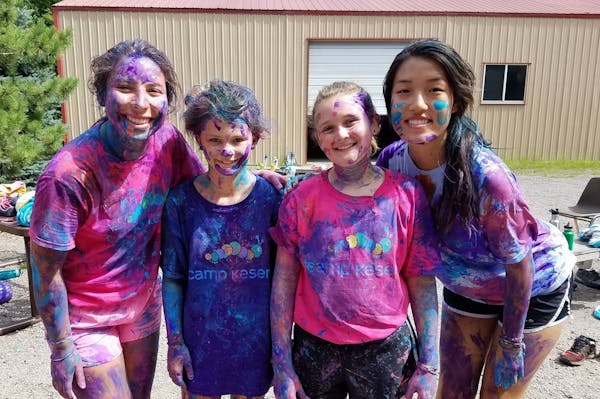Crowded classrooms. Stubborn achievement gaps. Teacher burnout. There's no single fix for all the challenges facing our educational system. But Erin Walloch's quiet army is making strides. This month, 130 older adults head into classrooms across Dakota, Scott and Ramsey counties with "Learning Buddies," a program matching seniors with struggling students for individual or group attention in reading, math, science and art. The 22-year-old program is building students' confidence, shrinking the skills gap, relieving teachers — even lowering seniors' blood pressure. Program Manager Walloch, a former teacher with a master's degree in multicultural education, schools us in Learning Buddies' success.
Q: The state Department of Education just announced it is pumping more money and support into more than 480 Minnesota schools facing low graduation rates, absenteeism and stagnant test scores. Do you want to shout: "Look at us! We can help!"
A: Absolutely. Learning Buddies, facilitated by the West St. Paul-based nonprofit DARTS, has now served 60,000 students, with nearly 10,000 volunteer hours. We want to continue to be part of the solution when addressing some of the challenges schools face today.
Q: How does it work?
A: We connect older adult volunteers with K-8 students, one to two hours a week throughout the school year. Teachers utilize their volunteers in the best capacity for their students. Maybe the buddies read with the kiddos, play math games or help with science fair projects. We want to match volunteers' skills and talents with teachers who are looking for those areas of support.
Q: What does it take to be a good Learning Buddy?
A: Have a kind and empathetic heart, and relate well to children.
Q: Who tends to step up?
A: The majority of our Learning Buddies are older retirees who want to give back, although we do have some college students and adults who may work full-time but visit a school near their work on their lunch break. Many have said they struggled in school and don't want to see other students feel the way they did. Others have grandchildren out of state and want to connect with kids around the same age.
Q: Do you see diversity in your buddies, in addition to age?
A: We have volunteers who are Muslim and who are veterans. Some buddies speak multiple languages.
Q: Do the buddies get training?
A: We have a kickoff for returning Learning Buddies, and an orientation for new volunteers in September, where they learn about challenges students and teachers may face and different strategies when working with students and supporting students' confidence. Later in the school year, we have a half-day training on topics such as cultural proficiency or bullying prevention. Even those who have done this for 18 years learn something new.
Q: You emphasize your buddies do more than teach.
A: We've had volunteers make mittens and hats in the winter. Buy pencils. One volunteer made a pair of snow pants for a child. They're natural helpers.
Q: What are the kids' reactions?
A: On one volunteer's first day last year, a little boy asked her, "Are you coming back tomorrow?" When she said she was coming back in four days, he asked, "What about tomorrow?" Sometimes the kids who don't have buddies ask, 'Why don't I get to work with him?' Every month, some buddies solve that problem by reading a book to the whole class.
Q: What are benefits to teachers?
A: Teachers see changes in their students and in their motivation level. They report that their students show great improvement in reading and comprehension, and excitement about reading. The Learning Buddies do what teachers don't have time to do on a daily basis. When teachers see the 'aha!' moments between the Learning Buddies and the students, it's pretty remarkable.
Q: The seniors benefit big time, too.
A: They always say they get more out of this than the kids do. Sixty percent have made a friend through Learning Buddies trainings, which is another way to combat isolation. Coming to school might be the only time they leave their house. They become part of the school culture. They're invited to weddings, baby showers, retirements. Studies find that older adults who regularly interact with children are more likely to show delayed mental decline, lower blood pressure and increased happiness.
Q: Why did Anne Kalb and Rita Younger, (a social worker and a DARTS employee, respectively) start the program 22 years ago?
A: At the time they connected, teachers were having trouble finding time to read with students one-on-one. They recruited 10 volunteers to read with students, and saw students' scores improve and rapport built. In 2005, STEM schools (science, technology, engineering, math) were popping up, so they added math and science to the reading support already offered.
Q: And, this year, you added art?
A: Yes. Art is helpful for students who, for example, have faced trauma in their lives and it's part of how some kids learn. It's often one of the first areas to get cut.
Q: What's next for you?
A: My goal is to do this job until I retire, and then I'll become a Learning Buddy.

Who inspires you?

Northfield's caring College Collaborative helps young parents succeed



